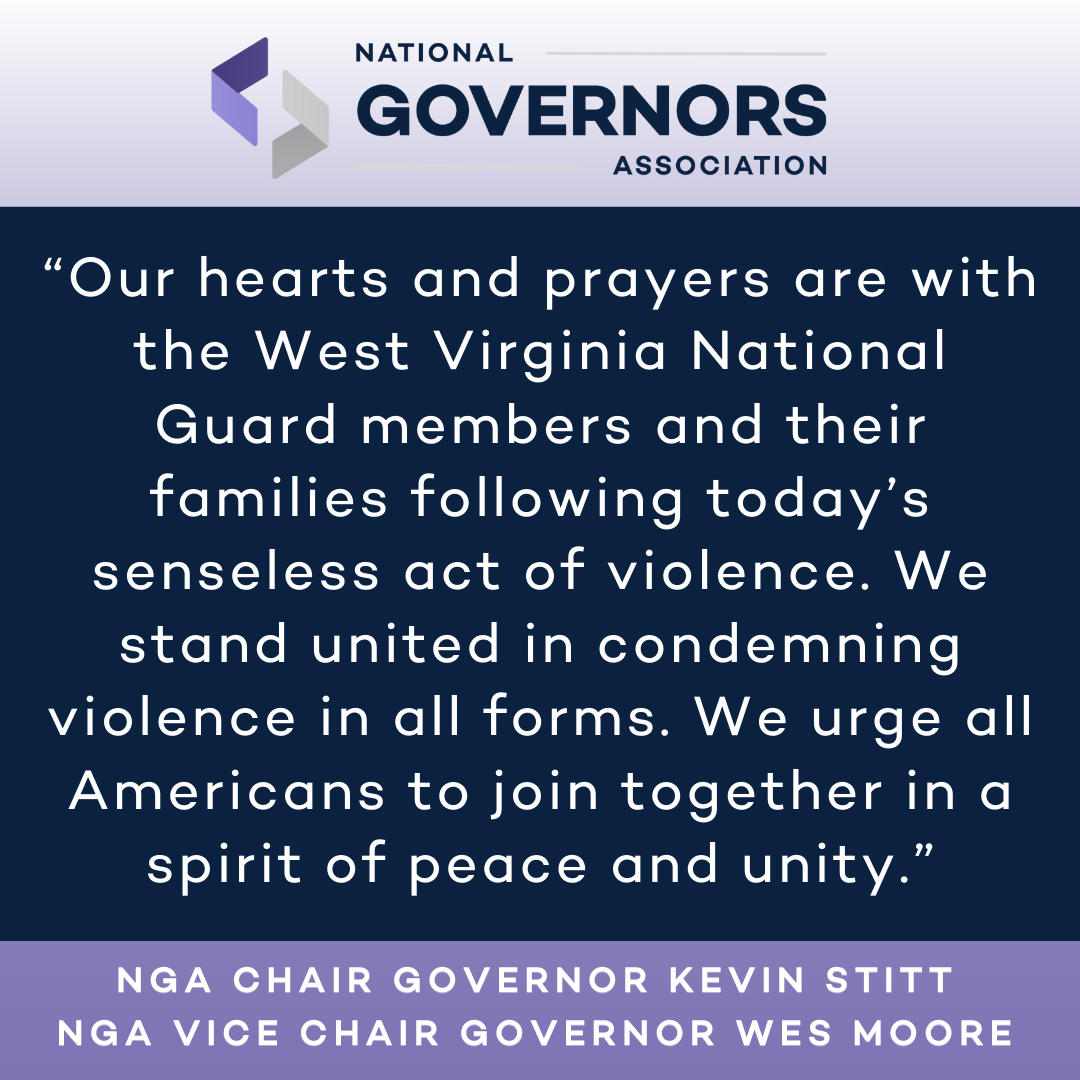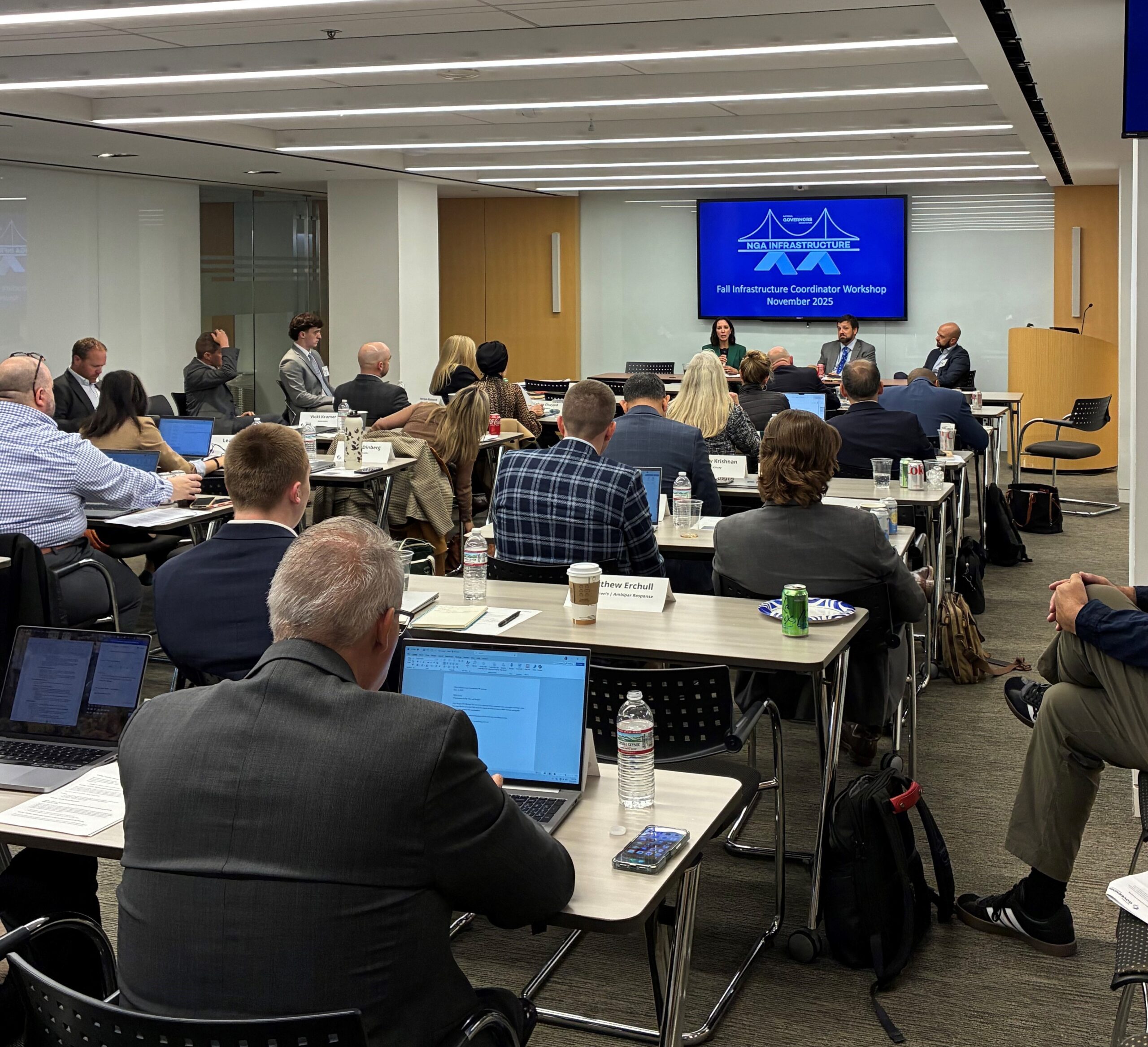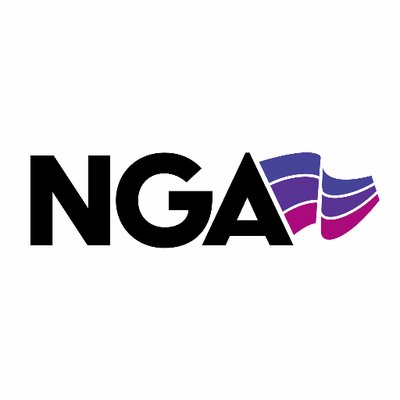June 9-11, 2025, NGA hosted its fourth Annual Broadband Leaders Workshop in downtown Columbus, Ohio. Over 65 broadband leaders from 30 states and territories came together with federal officials, internet service providers, and other corporate and non-profit leaders to share best practices and discuss critical issues in closing the digital divide in the United States. This meeting was held just days after the National Telecommunications and Information Administration (NTIA) released its Restructuring Policy Notice for the $42.5 billion Broadband Equity, Access and Deployment (BEAD) program, giving attendees the opportunity to review policy changes with NTIA, discuss the new guidance collaboratively and plan how to move forward with the upcoming 90-day deadline to submit Final Proposals under the BEAD program.
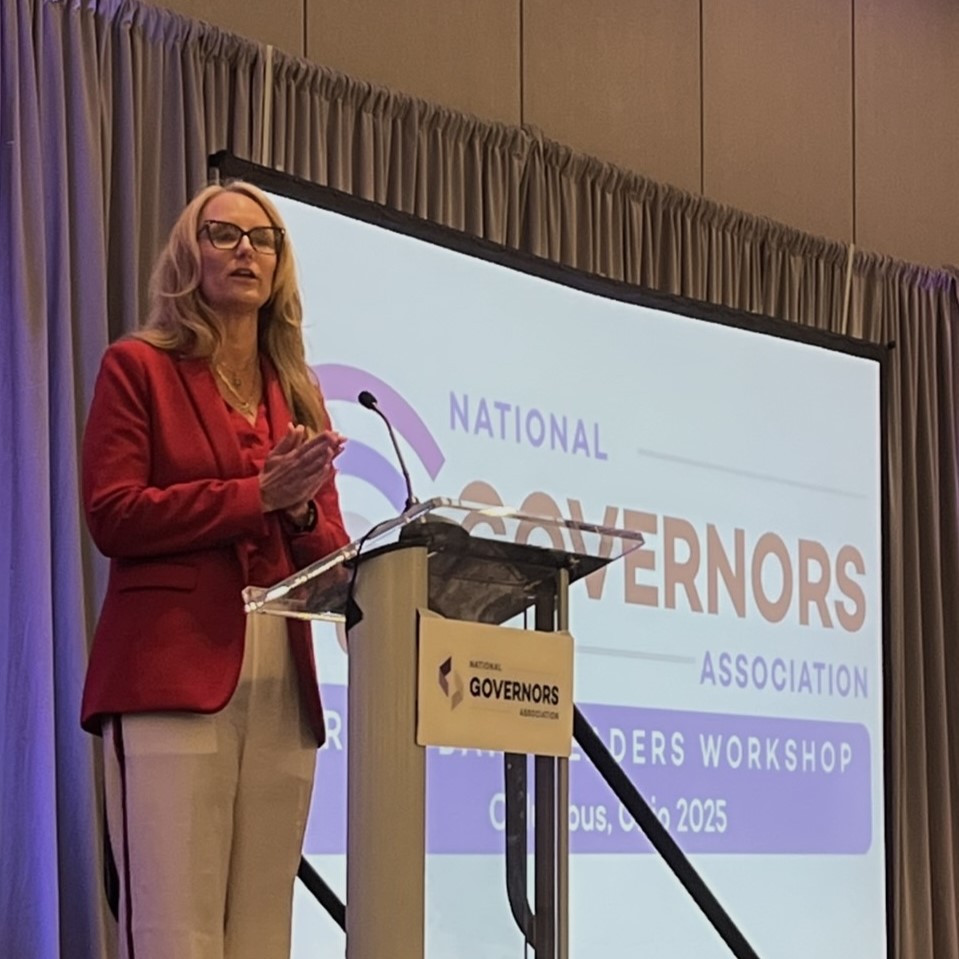
The event kicked off the afternoon of June 9, with a guided shuttle tour of the New Albany International Business Park. A group of state, territory and federal attendees had the opportunity to explore this major economic hub—which is home to several data centers and advanced manufacturing companies—and learn about the important role that high-speed broadband connectivity and other enabling infrastructure played in facilitating the development of this important site.
Official programming commenced the following morning with opening remarks from Lydia Mihalik, Ohio’s Director of the Department of Development. Director Mihalik welcomed broadband officials from across the country to Ohio and highlighted the critical importance of getting every household and business connected to high-speed internet. Director Mihalik acknowledged that while each state faces its own unique circumstances, everyone can nonetheless work together to achieve this goal.
These remarks were followed by a facilitated discussion on success stories and lessons learned so far in the deployment of broadband across the country. Attendees from states and the private sector shared their thoughts on best practices in broadband infrastructure deployment, underscoring the value of continually engaging and communicating with key stakeholders, the need for transparency to ensure projects stay the course and the importance of funding flexibility to reflect variations in project costs.
Following a short break, an official from the Federal Communication Commission (FCC) provided a comprehensive overview of the National Broadband Map. The official highlighted changes to the map over time as states and territories have connected locations to high-speed internet and as a result of audits and improvements to the data. The FCC official also discussed the role of the National Broadband Map in updating BEAD Initial Proposals under the new Policy Notice.
To round out the morning sessions, BroadbandOhio led a thoughtful discussion on the importance of collaboration in bridging the digital divide. The group discussed how Ohio Governor Mike DeWine, from the start of his administration, has shown support for broadband expansion and encouraged strong engagement with outside partners. This philosophy was embodied by BroadbandOhio who led collaborative efforts with external partners to promote the goal of connecting all communities to high-speed internet. Initiatives pursued by BroadbandOhio included the establishment of a fund for student internet access during the pandemic, as well as a Broadband Training Infrastructure Program made possible with The Ohio State University. The panel noted that to achieve the best outcome through these partnerships, engagement should include regular meetings and consistent communication to help maintain mission alignment and enable proactive information sharing.
Following a networking lunch, workshop attendees explored best practices in deploying different broadband connectivity technologies. Firstly, Verizon and USTelecom discussed their experience with the deployment of fiber, underscoring the technology’s resiliency as well as its ability to scale over time to meet growing demand. Following this, several State Broadband Leaders reflected on their experience to-date connecting communities with low earth orbit (LEO) satellite services. Lessons cited by the panel included the need to widely promote the availability of LEO within communities and support residents with installation. During the final part of this session, representatives from Tarana Wireless and Digital C —a community driven internet service provider—shared the success that has been achieved using fixed wireless technologies to connect thousands of families in Cleveland, Ohio. A partnership forged between Tarana and Digital C facilitated the transition of Cleveland from one of the least connected U.S. cities to one with 99% coverage in just 18 months. The speakers pointed out that even with the success they have had, the issue of bridging the digital divide needs continual focus to ensure no one is left behind.

To wrap up the second day of the workshop, states and territories participated in small group discussions with representatives from McKinsey to discuss how they should plan for the upcoming subgrantee deadline, such as aligning state priorities with scoring rubrics as well as ensuring universal coverage in the project design process. This was followed by a closed-door meeting between state and territory broadband leaders and federal officials on the BEAD program and the newly released Restructuring Policy Notice.
Programming for the third day of the workshop began with an informative dialogue with NTIA on permitting. This session covered how recent Executive Orders from the President, court orders relating to the National Environmental Policy Act (NEPA) and other permitting regulations should help streamline the process and expedite broadband infrastructure permitting. The NTIA official spoke on new tools such as the Environmental Screening and Permitting Tracking Tool designed to help states and territories monitor the progress of environmental screening approvals and streamline the NEPA documentation review process.
The day continued with a discussion between state broadband leaders and a representative from Charter Communications on developing partnerships between states and internet service providers. Panelists underscored that a strong, proactive relationship between states and ISPs is key for successful broadband deployment through promoting the speedy resolution of issues, better grant agreement negotiations, and ultimately to show communities how they can best get connected.
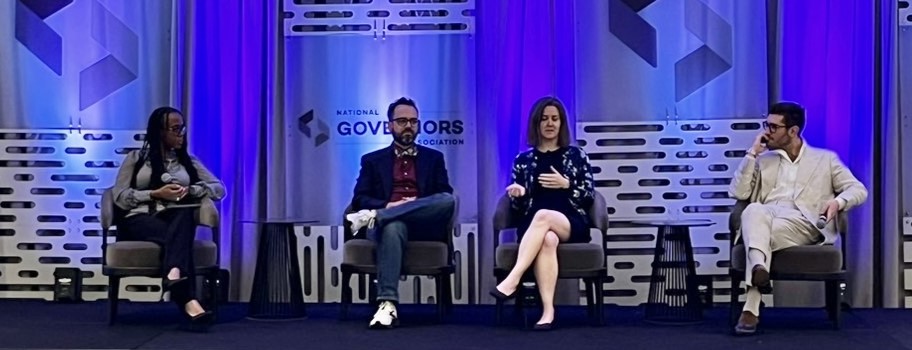
Towards the end of the workshop, attendees shared concluding thoughts on the future of broadband and next steps moving forward. After closing remarks made by BroadbandOhio, the workshop concluded with a state and territory-only session to reflect on the last two days and develop their own strategies.
NGA would like to thank Governors’ Broadband Leaders, federal officials, NGA partners and other attendees who participated and made it such a worthwhile convening. NGA also extends a special thanks to the entire Ohio team for their hospitality.




